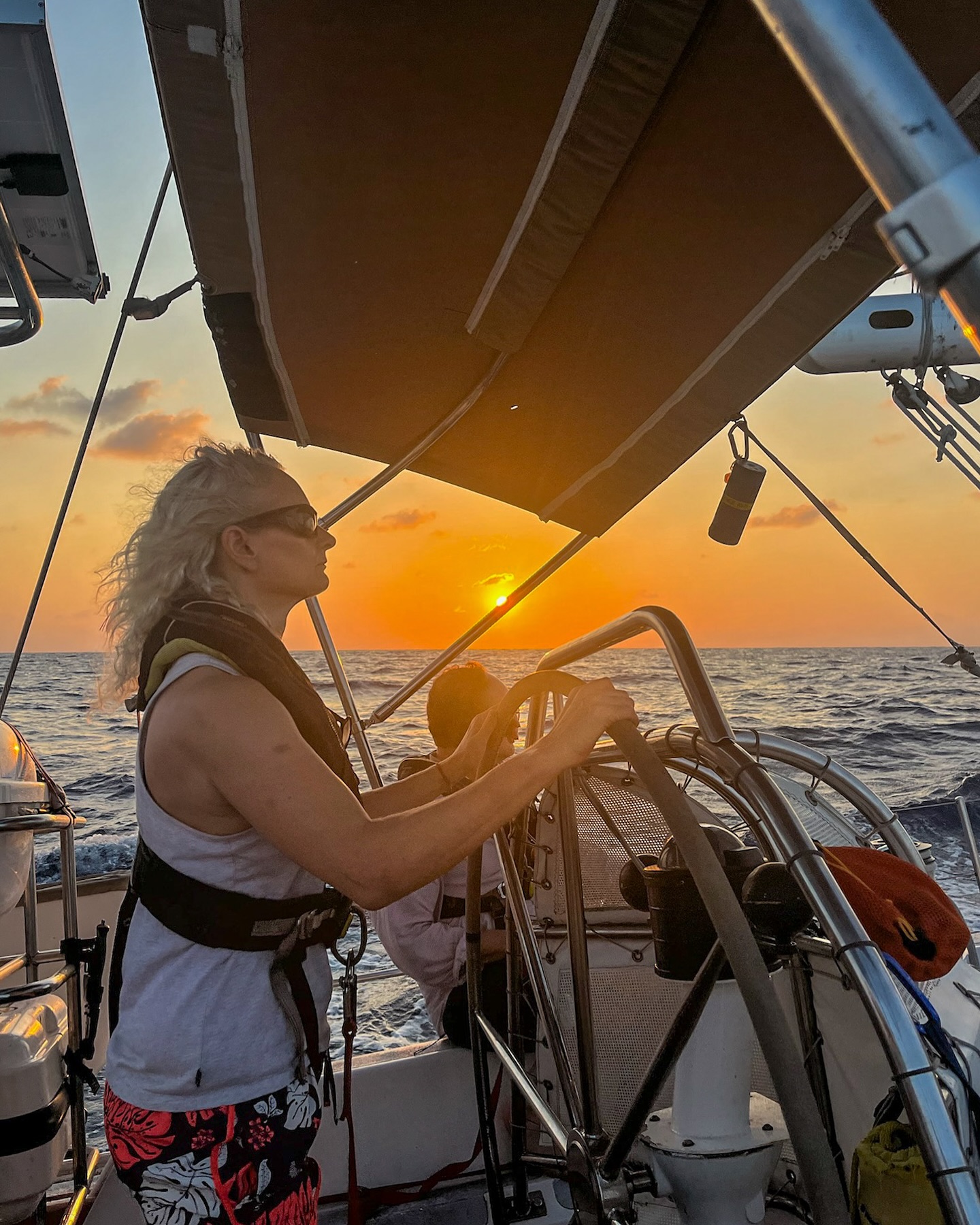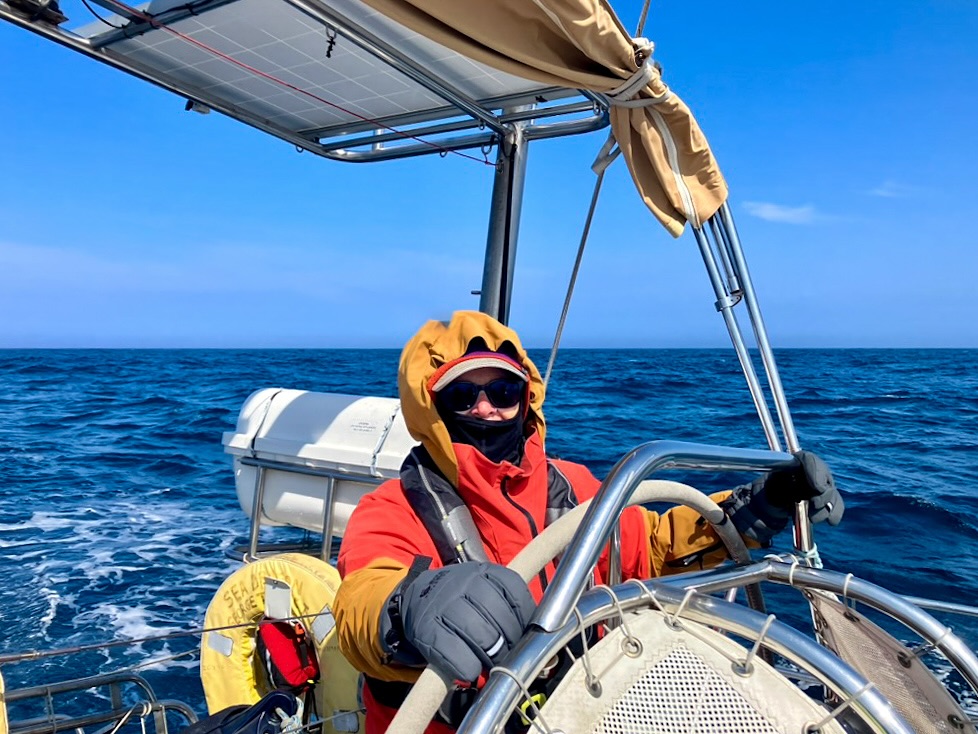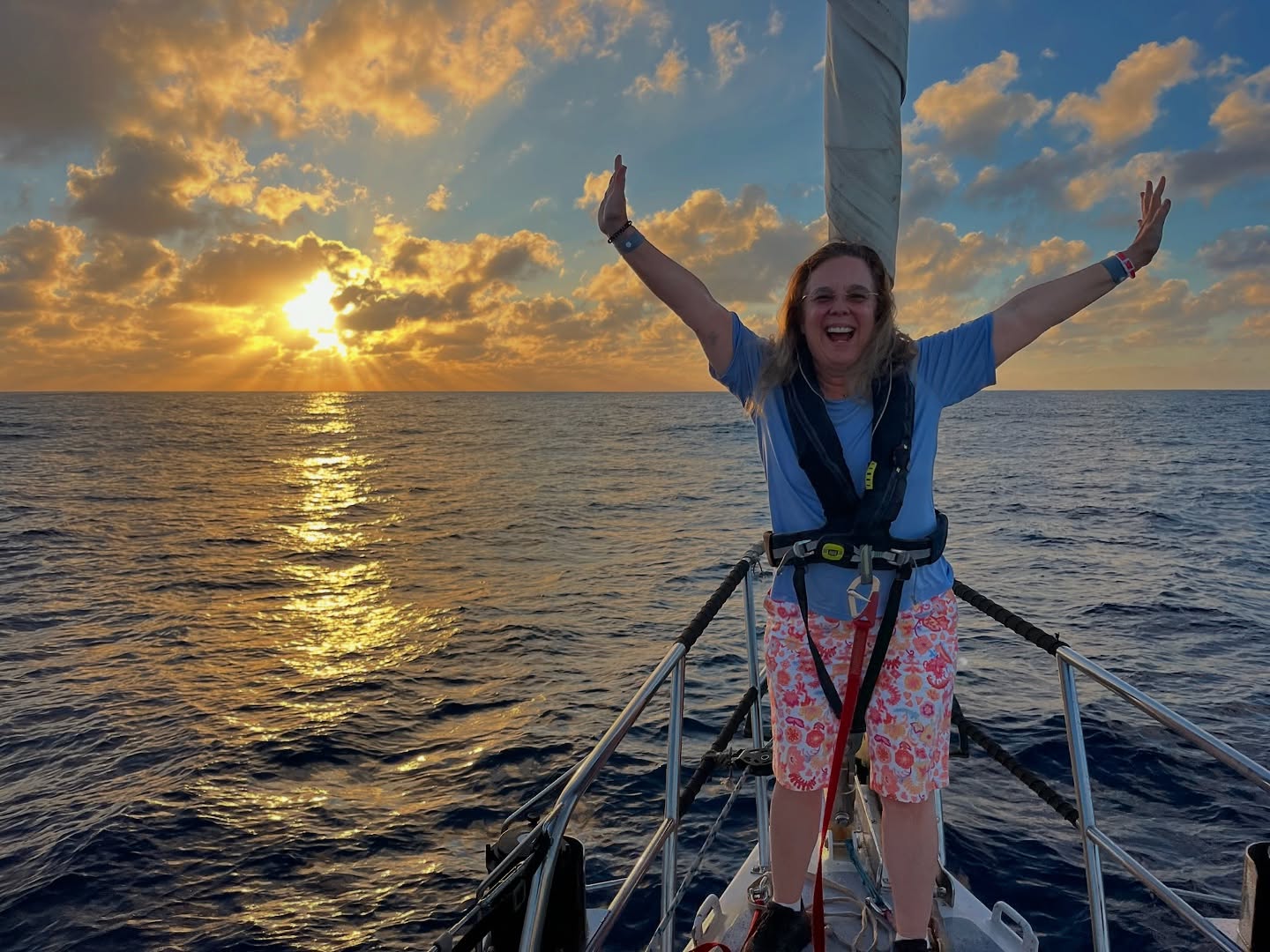We’ve landed safely on Ascension Island – all the crew were pleased to see land and a cold beer after thirteen days at sea. The last 72 hours of the voyage were rough as we were close hauled, heading almost straight into the swell. Two miles off the anchorage at Georgetown we pulled up the last trawl, to find 3 fragments of white plastic among the zooplankton and small fish.
Landfall at a new island is always exciting. On this occasion, none of the crew had been to Ascension before so no one knew what to expect. All eleven of us were on deck for the approach. As the grey landmass on the horizon became clearer, our first surprise was the colour. The hills are vibrant red-orange with streaks of green and yellow. The rock formations are rounded, jagged and everything in between. We drew closer to see the army style barracks, military towers, communications pylons and observatory domes juxtaposed on the rugged, raw landscape.
Georgetown is sleepy with one little shop, post office and a bar. We hurried to make it to the bank before it closed – it’s a half day, it is Thursday after all. For many of the 900 inhabitants it is an honour and privilege to be here. Most are selected from Saint Helena to move here temporarily. Ascension has no permanent residents. The maximum permit is two years, with no guarantee to stay longer than that. Accommodation is all government owned, asbestos roofed, single story housing. Tourists are few and far between. There was one boat last month and we are probably the last until next season.
Our biggest challenge has been the landing procedure. We may only bring the dinghy ashore at the wharf – the beaches are too steep and dangerous, they are also breeding grounds for many turtles and birds. On Saturday, after a precarious landing mission, the local fishermen advised against using the wharf for the following days until the swell died down. With half the crew ashore and half on the boat, our team has been split for several days!
I’m now sat on the wharf looking out at the lines of rolling swell heading to shore. Sea Dragon is turning on her anchor, her mast swaying side to side. Lucky Clive and Dale are looking after the boat. The waves are still crashing into the concrete landing steps, it’s far too rough to attempt to bring the dinghy in.
With all this time stranded on land we’ve had several days to survey the beaches and coastlines. On the west coast, the leeward side, the majority of rubbish found is litter left behind by beach goers or heavy waste that has been dumped. On the east coast, the windward side of the island, we expected to find large amounts of marine debris. There were some well travelled drinks bottles, small plastic fragments and a washed up timber raft on the small rocky coves. Most of the coastline is sheer cliffs of volcanic rock where simply plastic does not wash up and stay.
Emily Penn

























